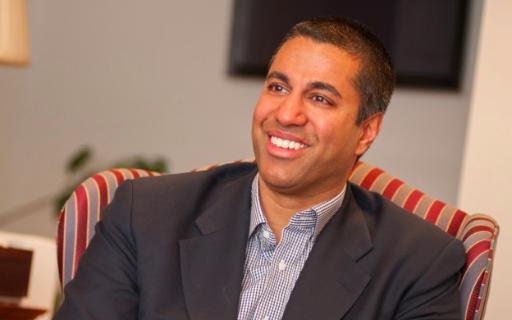FCC takes tech agnostic approach with $20bn broadband initiative
The digital divide is a problem which has plagued the US for years, though this latest initiative seems to be a more reasonable compromise between bureaucratic guidance and industry smarts.
June 10, 2020

The digital divide is a problem which has plagued the US for years, though this latest initiative seems to be a more reasonable compromise between bureaucratic guidance and industry smarts.
The Federal Communications Commission (FCC) initiative, which will be known as the Rural Digital Opportunity Fund, will make $20.4 billion available to telcos who can deliver high-speed, low-latency networks to the underserved regions of the US. Bidders can register their interest in Phase I of the initiative from July 1, which will make $16 billion available to the winning telcos over a period of 10 years.
“In my three-plus years as Chairman of the FCC, closing the digital divide – the gap between Americans with access to broadband and those without it – has consistently been my top priority,” said FCC Chairman Ajit Pai.
Pai has been quick to congratulate himself, however there is still a long way to go as you can see from Omdia’s estimates below:
US market fixed broadband penetration (2016-19), thousands |
Year |
2016 |
2017 |
2018 |
2019 |
*Omdia World Information Series
The above figures are only for traditional fixed broadband services, the only technologies which have been able applicable for financial support in previous initiatives, but this is where the FCC has made some very important alterations. For the Rural Digital Opportunity Fund, conditions and decisions are outcome based, not technology orientated.
“I appreciate Commissioner O’Rielly’s work in revising this Public Notice to eliminate the categorical bar on low earth orbit satellite systems bidding in the low-latency tier, especially now that we have evidence in the record that those systems can meet the 100-millisecond latency standard,” Commissioner Geoffrey Starks said in response to the news.
When applying for the funds, a bidder will have to indicate which category of service they will be able to deliver. There are tiers based on different download speed ranges but also latency ranges. This explains the specificity of the Starks’ gratitude above, but the same technology agnostic approach has been applied across all categories.
“We’ve focused on maintaining technological neutrality and maximizing competition in our USF [Universal Service Fund] programs,” said FCC Chairman Pai. “And here, we do that by opening the door to new types of technologies to apply for different tiers in the auction. For example, we allow fixed wireless and DSL providers for the first time to apply to bid in the gigabit tier.
“And, at the request of one of my fellow commissioners, we also don’t entirely close the door on low earth orbit satellite providers bidding in the low-latency tier.”
Why is fibre broadband adoption by consumers so low? (when available)
The services are priced too high (44%, 56 Votes)
There isn't enough market awareness (18%, 23 Votes)
Consumers don't feel they need fibre speeds yet (17%, 22 Votes)
Other (10%, 12 Votes)
Lack of trust in telco promises thanks to misleading advertising (6%, 8 Votes)
Services aren't good enough (4%, 5 Votes)
Total Voters: 126
The error of many Government funds and initiatives in recent years is to be too laser focused on technology delivery. Yes, fibre broadband is the most future-proofed technology available today, but sometimes concessions have to be made to ensure the highest number of people have access to adequate broadband services.
For example, the to offer 100 Mbps broadband services, a connection which would more than satisfy the digital appetites of almost every consumer, fibre is not the only option. The end objective should be to deliver fibre, but services can be offered in the meantime while telcos build full-fibre networks in a commercially viable manner. The concept of a ‘fibre spine with wireless wings’ is one which we like.
The ‘last mile’ is the most difficult and financial burdensome element of delivering full-fibre services. Connecting the cabinet is a simpler task, but in the areas which fall into the depths of the digital divide, a fixed wireless offering would act as a tolerable short- to mid-term solution, while full-fibre services are delivered in a commercially feasible fashion.
This approach from the FCC promises a technology agnostic approach, with the long-term ambition being full-fibre networks. It is one which is far more suitable for today’s world where telcos are financing heavy financial pressures. However, whether the walk follows the talk remains to be seen, as we are all used to bureaucrats promising greatness before returning to the tried and tested mediocrity of the familiar.
About the Author(s)
You May Also Like








.png?width=300&auto=webp&quality=80&disable=upscale)


_1.jpg?width=300&auto=webp&quality=80&disable=upscale)


.png?width=800&auto=webp&quality=80&disable=upscale)